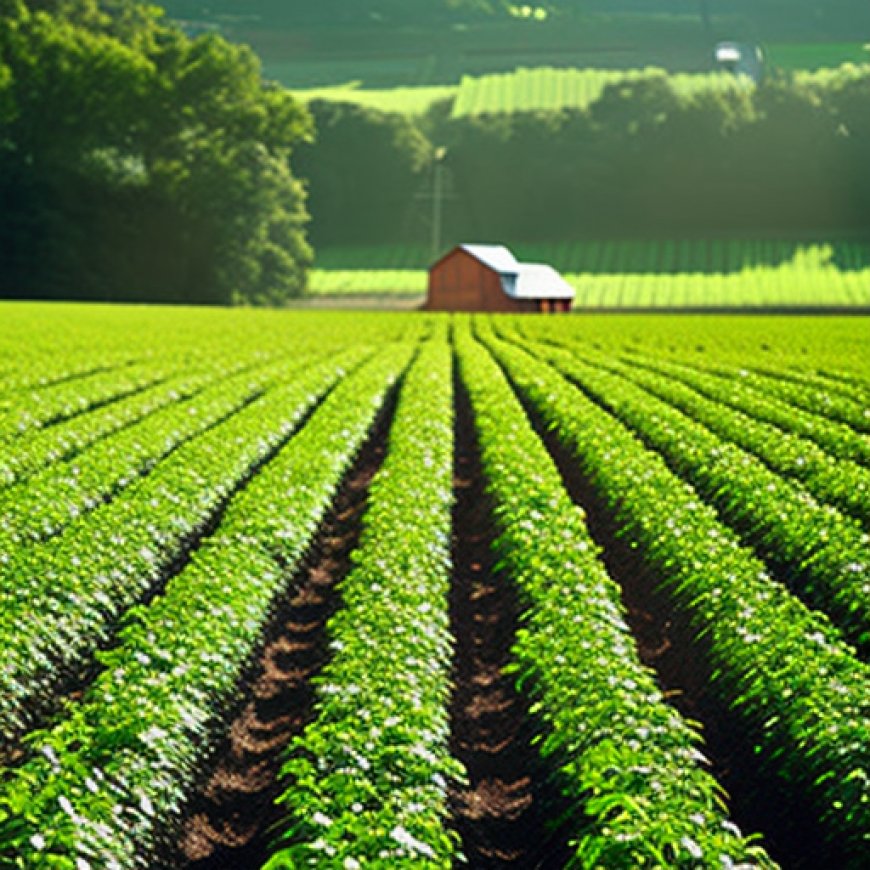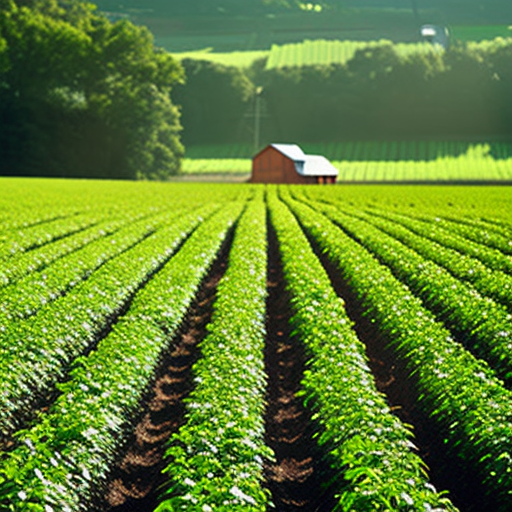Billions of ‘climate-smart’ USDA funding goes to climate-negative farming: Report | GreenBiz
Billions of ‘climate-smart’ USDA funding goes to climate-negative farming: Report GreenBiz


The U.S. Department of Agriculture’s “Climate-Smart” Programs Fall Short on Sustainable Development Goals

A new report reveals that the U.S. Department of Agriculture’s (USDA) “climate-smart” programs are often climate-neutral or even climate-negative. Between 2017 and 2022, only 31 percent of the $5.5 billion sent to farmers through one of USDA’s main environmental programs funded practices on the department’s official climate-smart list, according to the Environmental Working Group (EWG). The non-profit group also found that out of the top 10 practices funded in 2023, only two were on the climate-smart list.
Insufficient Funding for Climate-Smart Practices
The majority of the funding, approximately $3.8 billion, went towards structural practices such as fencing, livestock practices, and irrigation practices, which do not align with the Sustainable Development Goals (SDGs) outlined by the USDA. Anne Schechinger, EWG’s Midwest director, highlighted the need for more investment in climate-smart practices to address the pressing environmental challenges.
The Importance of USDA’s Environmental Quality Incentives Program (EQIP)
EQIP is one of USDA’s largest conservation subsidy programs and plays a crucial role in achieving the SDGs. It provides funding for various activities listed as “climate-smart,” including cover crops, no-till soil routines, and wetland restoration. Agriculture accounted for 10.6 percent of the U.S.’s total greenhouse gas emissions in 2023, making EQIP’s support for climate-smart practices essential.
In 2023 and 2024, the USDA added 14 “provisional” practices to the climate-smart list. These practices lack quantifiable data to prove their emissions reduction potential, according to Schechinger. One such practice is waste storage, specifically the construction of manure lagoons. Manure lagoons contribute to 11 percent of U.S. agricultural emissions and release significant amounts of nitrous oxide, a potent greenhouse gas. Additionally, manure often pollutes streams, drinking water, and groundwater, further exacerbating environmental challenges.
Previous Criticisms of EQIP
This is not the first time EQIP has faced criticism. A report by the Institute for Agriculture and Trade Policy published in 2022 highlighted that EQIP funds agricultural practices that are not environmentally beneficial and, in some cases, worsen the environment. The report specifically mentioned industrial practices and factory-farm friendly approaches funded by EQIP, including waste storage facilities.
USDA’s Response
A spokesperson for USDA dismissed EWG’s research as “fundamentally flawed.” The spokesperson emphasized that USDA follows a rigorous, science-based methodology to determine eligible practices and ensures the implementation process maximizes the climate-smart benefits of these practices.
SDGs, Targets, and Indicators Analysis
1. Which SDGs are addressed or connected to the issues highlighted in the article?
- SDG 2: Zero Hunger – The article discusses the U.S. Department of Agriculture’s programs that provide funding to farmers, which is relevant to addressing food security and ending hunger.
- SDG 13: Climate Action – The article highlights the USDA’s “climate-smart” programs and their impact on reducing greenhouse gas emissions and addressing climate change.
- SDG 15: Life on Land – The article mentions the USDA’s environmental programs that fund practices such as wetland restoration and cover crops, which contribute to preserving terrestrial ecosystems.
2. What specific targets under those SDGs can be identified based on the article’s content?
- SDG 2.4: By 2030, ensure sustainable food production systems and implement resilient agricultural practices that increase productivity and production, that help maintain ecosystems, that strengthen capacity for adaptation to climate change, extreme weather, drought, flooding, and other disasters, and that progressively improve land and soil quality.
- SDG 13.2: Integrate climate change measures into national policies, strategies, and planning.
- SDG 15.1: By 2020, ensure the conservation, restoration, and sustainable use of terrestrial and inland freshwater ecosystems and their services, in particular forests, wetlands, mountains, and drylands, in line with obligations under international agreements.
3. Are there any indicators mentioned or implied in the article that can be used to measure progress towards the identified targets?
- Indicator for SDG 2.4: Percentage of agricultural area under productive and sustainable agriculture.
- Indicator for SDG 13.2: Number of countries that have integrated climate change measures into national policies, strategies, and planning.
- Indicator for SDG 15.1: Coverage of protected areas in relation to terrestrial areas.
Table: SDGs, Targets, and Indicators
| SDGs | Targets | Indicators |
|---|---|---|
| SDG 2: Zero Hunger | 2.4: By 2030, ensure sustainable food production systems and implement resilient agricultural practices that increase productivity and production, that help maintain ecosystems, that strengthen capacity for adaptation to climate change, extreme weather, drought, flooding, and other disasters, and that progressively improve land and soil quality. | Percentage of agricultural area under productive and sustainable agriculture. |
| SDG 13: Climate Action | 13.2: Integrate climate change measures into national policies, strategies, and planning. | Number of countries that have integrated climate change measures into national policies, strategies, and planning. |
| SDG 15: Life on Land | 15.1: By 2020, ensure the conservation, restoration, and sustainable use of terrestrial and inland freshwater ecosystems and their services, in particular forests, wetlands, mountains, and drylands, in line with obligations under international agreements. | Coverage of protected areas in relation to terrestrial areas. |
Behold! This splendid article springs forth from the wellspring of knowledge, shaped by a wondrous proprietary AI technology that delved into a vast ocean of data, illuminating the path towards the Sustainable Development Goals. Remember that all rights are reserved by SDG Investors LLC, empowering us to champion progress together.
Source: greenbiz.com

Join us, as fellow seekers of change, on a transformative journey at https://sdgtalks.ai/welcome, where you can become a member and actively contribute to shaping a brighter future.







